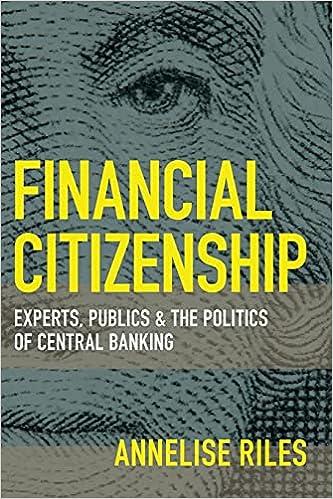Question
3-22 (10 pts) (a) Make decision on where to invest the $10,000. There are two alternatives: Invest in the stock market, and Invest in CD.
3-22 (10 pts)
(a) Make decision on where to invest the $10,000.
There are two alternatives:
Invest in the stock market, and
Invest in CD.
There are three states of nature on the future market condition:
Good, Fair, and Poor.
Lets put payoff as the net gain of the investment in a year. (For example, the net gain for CD is $10,000 * 9% = $900.
Fill up the payoffs in the table below and calculate EMV for each alternative:
| Investment Alternatives | States of Nature | EMV (expected value) | ||
| Good market | Fair market | Poor market | ||
| 0.4 | 0.4 | 0.2 | ||
|
|
|
|
|
|
| Stock market |
|
|
|
|
| CD |
|
|
|
|
|
|
|
|
|
|
(b) The maximum EMV = _____________. Therefore, the decision is _____________.
3-23 (12 pts) Continuation of Problem 3-22
(a) How much would Allen be willing to pay the newsletter to get the perfect information?
We need to calculate EVPI, as follows.
The column maximums (refer to the payoff table you have constructed in Problem 22):
b1 = maximum of column 1 (good market) = ____________.
b2 = maximum of column 2 (fair market) = _____________.
b3 = maximum of column 3 (poor market) = ____________.
Calculate the expected value with perfect information, EVwPI (finish the calculation):
EVwPI = (b1)(p1) +(b2)(p2) + (b3)(p3)
=
=
Calculate the expected value without the information, EVw/oPI:
EVw/oPI = Max EMV
= __________ (from your results in the last problem).
Calculate the expected value of perfect information, EVPI (finish the calculation) :
EVPI = EVwPI - EVw/oPI
=
=.
So, Allen would be willing to pay at most _________ for the newsletter.
Step by Step Solution
There are 3 Steps involved in it
Step: 1

Get Instant Access to Expert-Tailored Solutions
See step-by-step solutions with expert insights and AI powered tools for academic success
Step: 2

Step: 3

Ace Your Homework with AI
Get the answers you need in no time with our AI-driven, step-by-step assistance
Get Started


